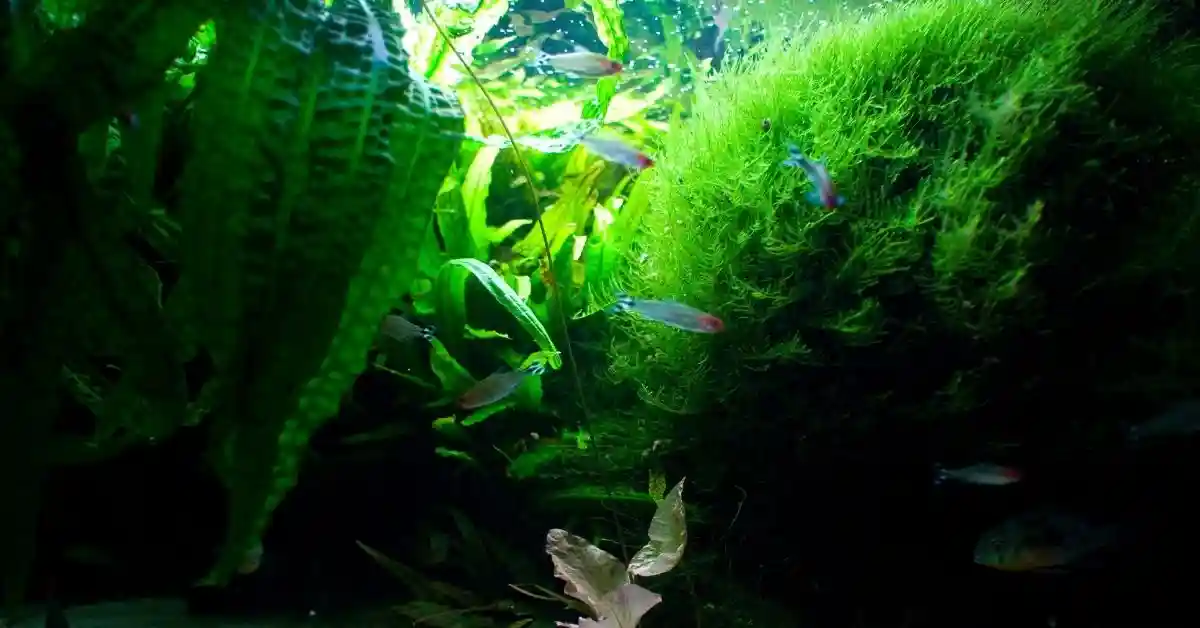Brought home a Chaetomorpha only to find that it’s not growing after a couple of weeks? Or maybe your old Chaetomorpha suddenly stopped growing for the past month.
Either way, we know how frustrating this situation is.
Why is your Chaetomorpha not growing?
Chaetomorpha may not be growing due to nitrate and phosphate deficiency. Also, the absence of appropriate light and movement can cause stunted growth.
Impure water can also play a role in stopping the growth of algae.
This short explanation may not answer your query properly. So without wasting any more time, let’s get into the details!
Reasons Why Your Chaetomorpha Is Not Growing
Chaetomorpha is a very sensitive breed of algae. As a result, you need to handle these with extreme care. One little thing can offset their growth cycle.
Finding out exactly why your Chaetomorpha isn’t growing can be quite a difficult feat.
So to make it easy for you, I’ve listed some of the possible reasons why your Chaetomorpha may not be growing.
Nitrate Deficiency
One of the most common reasons for your Chaetomorpha not growing is nitrate deficiency. Nitrate is a macronutrient for Chaetomorpha.
The primary nutrition needed for your Chaetomorpha to grow is nitrate. So your Chaetomorpha needs an ample amount of this nutrition to grow properly.
Failing to provide enough nitrate will result in stunted growth
. So if your Chaetomorpha is facing growth issues, check its nitrate levels.
Solution
The first thing that you need to do is to check the nitrate levels of your Chaetomorpha.
There are a lot of nitrate testing kits on the market that show exactly how much nitrate is present.
Once you’ve checked the nitrate levels, use nitrate supplements for your Chaetomorpha. This will make sure that your algae are getting enough nutrients.
Phosphate Deficiency
Another viable deficiency that Chaetomorpha may suffer from is phosphate deficiency.
Although your Chaetomorpha only needs a little bit of this nutrition, it’s still equally important.
The level of phosphate present in your Chaetomorpha should be between 0.2-0.8 units. A rise or fall from this range will be detrimental to your algae.
So also, look out for a rise in phosphate as well. The technique of controlling phosphate is similar to lowering magnesium in the tank.
Solution
The first thing that you need to do is to detect whether your Chaetomorpha is phosphate deficient.
For that, you can find water testing kits on the market. These kits detect the level of phosphate present in the tank.
After detecting the phosphate level, if you find that your algae are phosphate deficient, put supplements in the water tank.
Lack of Iron
Although Chaetomorpha can bind irons easily, sometimes it suffers from iron depletion.
This may happen if you use strong cleaning agents to clean the water inside your water tank.
Strong cleaning agents contain many harsh chemicals that strip away the natural amount of iron needed for your algae to survive. Algae needs a small amount of iron to grow properly.
Lack of iron may result in other organisms in your reef tank, like Chaetomorpha, algae, and hammer coral dying.
Solution
To treat iron deficiency, immediately start putting iron tablets designated for your algae in the water tank.
This will resolve the iron efficiency crisis.
As a preventative measure, refrain from using strong cleansers to clean your water tank. By stopping the usage of strong cleansers, your algae won’t be stripped of vital nutrition.
Low Power Light
Besides nutrition, your algae need an ample amount of light to grow properly.
The water tank can get dark at times. This will inhibit the growth of your algae.
Solution
Always check whether your algae is getting enough light or not. Add extra light on top of your algae so that they can always have access to proper lights.
Low power light will also cause your chaeto to turn white. This is a sign of hindered growth.
Install suitable powered led lights inside your water tank.
One more thing that you need to do is to move the Chaetomorpha around. This will make sure that your algae are getting an even amount of light.
Presence of Unknown Elements
Sometimes due to microbes or other minute particles, your algae will stop growing. These microbes will contaminate the algae.
Using tap water or unclean water may cause these microbes to contaminate your algae. Chaetomorpha can’t grow in contaminated water.
Solution
Always use distilled water in your water tank. Never use tap water for water changes or top-offs. If you can’t find distilled water near you, you can always make distilled water by yourself.
Also, wash your hands before handling the water tank, as you don’t want any bacteria present.
Lack of Movement
Chaetomorpha needs to be moved around every couple of days. They like to be free-floating. Constraining them would stop their healthy growth process.
Moving them around would also prevent large clumps. If your Chaetomorpha clumps together, then lights can’t penetrate easily. As a result, it may die off.
Solution
Refrain from keeping your algae stagnant. Always move them around from time to time. It’s best if you move them every three days.
Move Chaetomorpha towards the light. Make sure that they always get an even amount of light.
Every part of your Chaetomorpha should be exposed to light.
FAQs
Question: What’s the growth rate of a Chaetomorpha?
Answer: Typically, a healthy Chaetomorpha should grow by 50% weekly. The rate can differ by 5-10%.
Question: How many hours of light does a Chaetomorpha need?
Answer: A Chaetomorpha needs 16 hours of light and 8 hours of darkness daily.
Question: What kind of light is needed for a Chaetomorpha?
Answer: The ideal light for a Chaetomorpha is a white LED light.
Conclusion
With that, we’ve reached the end of this segment. I hope all of your queries regarding Chaetomorpha not growing have been answered.
Make sure to follow all the solutions that I’ve given for your algae to grow at a healthy pace.

